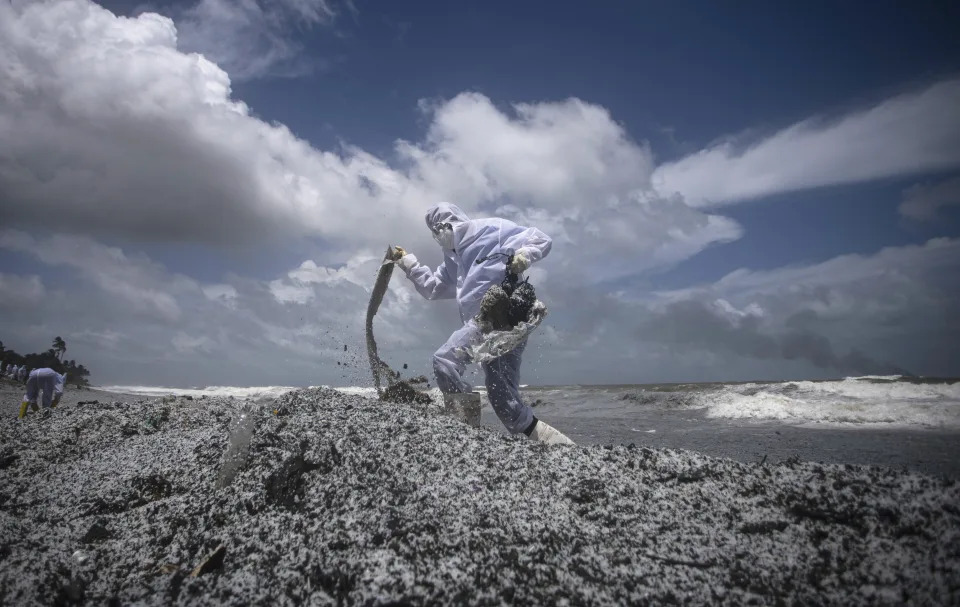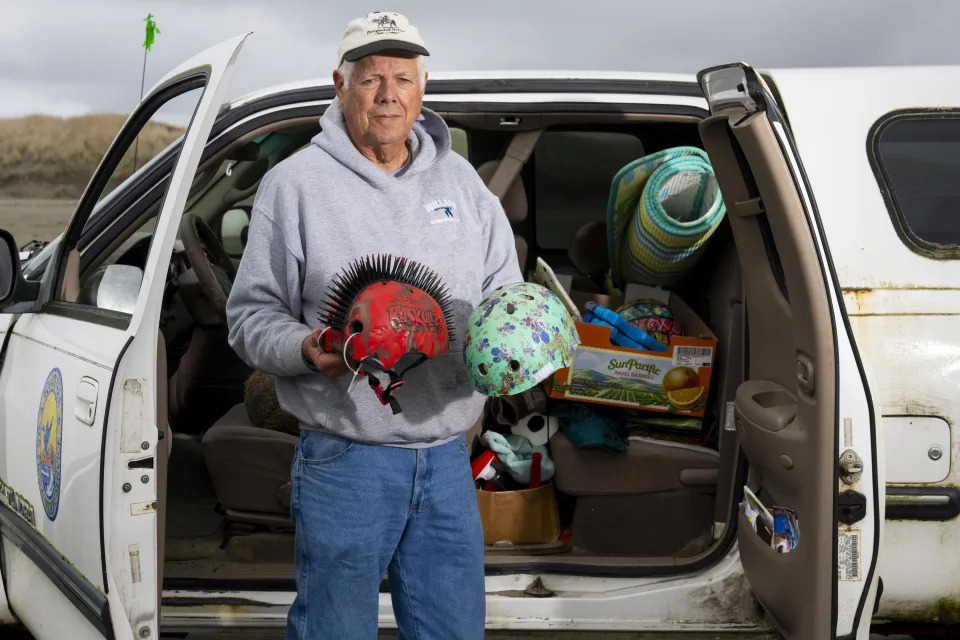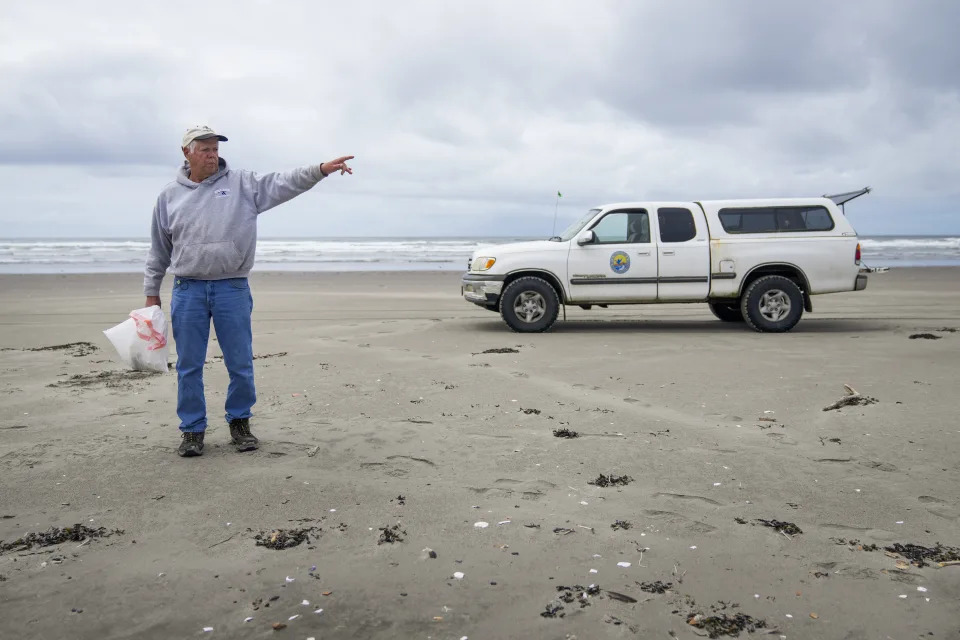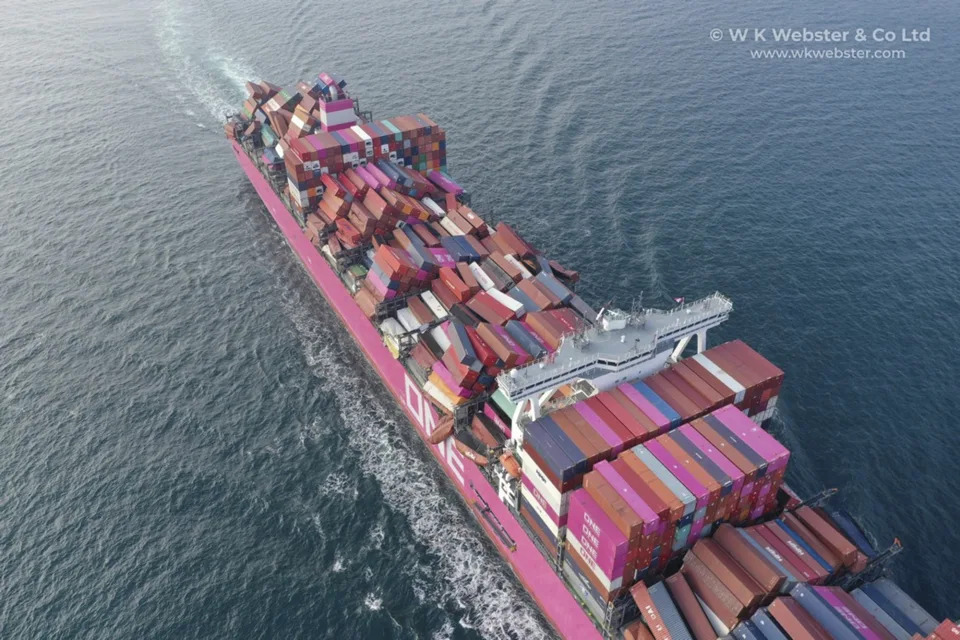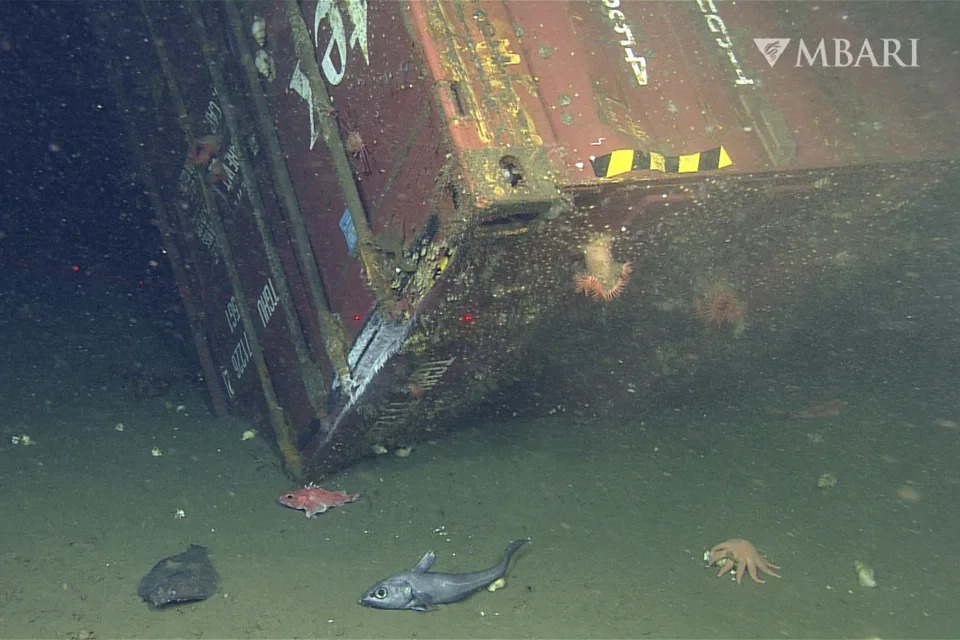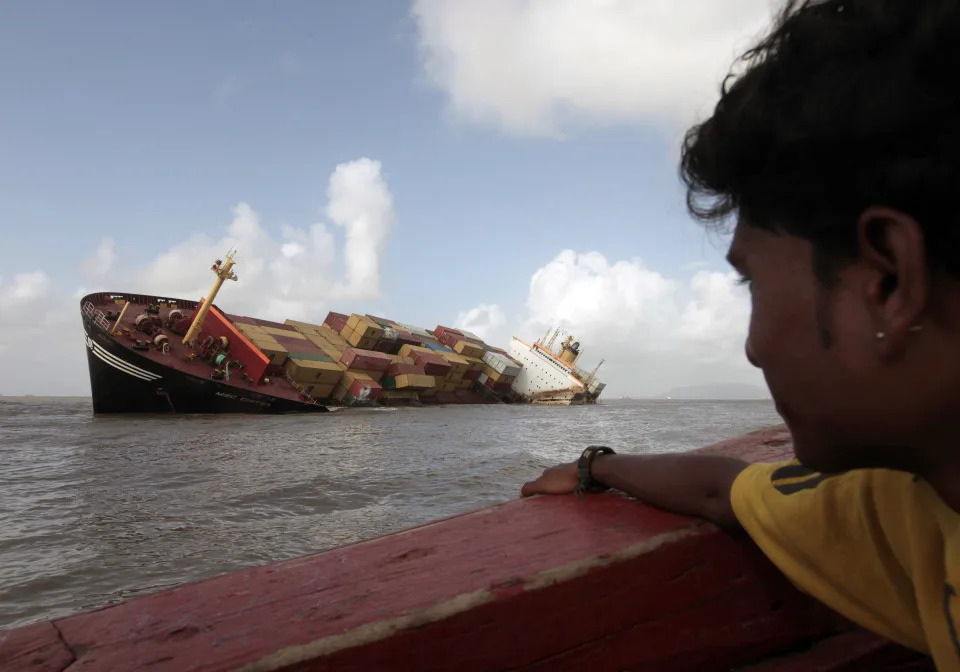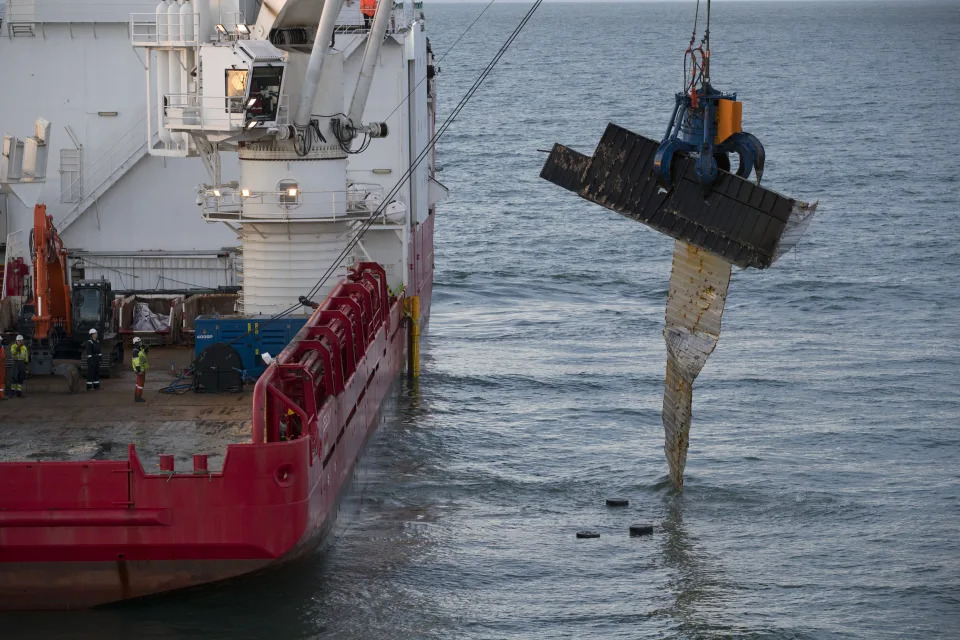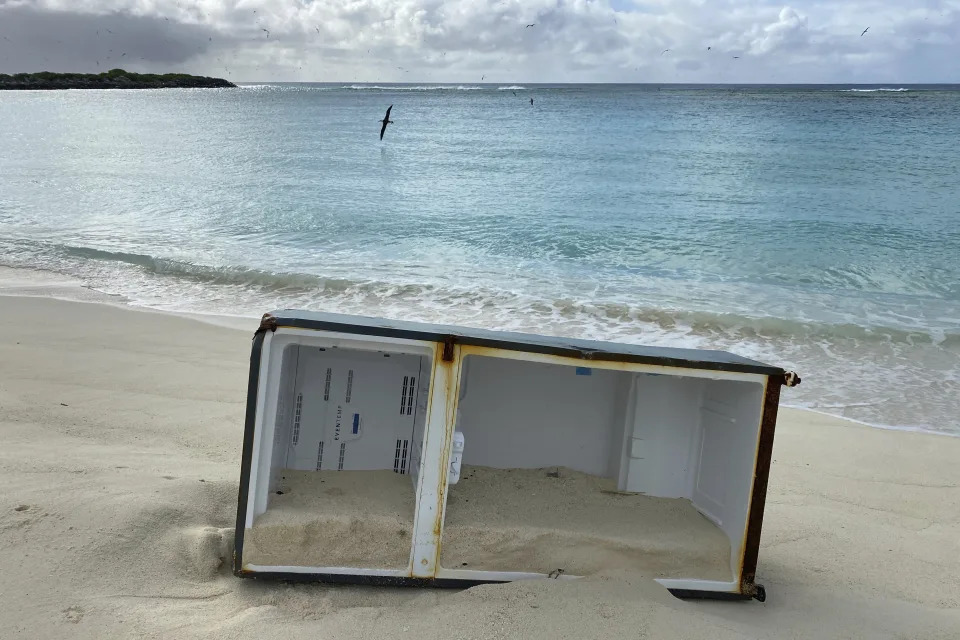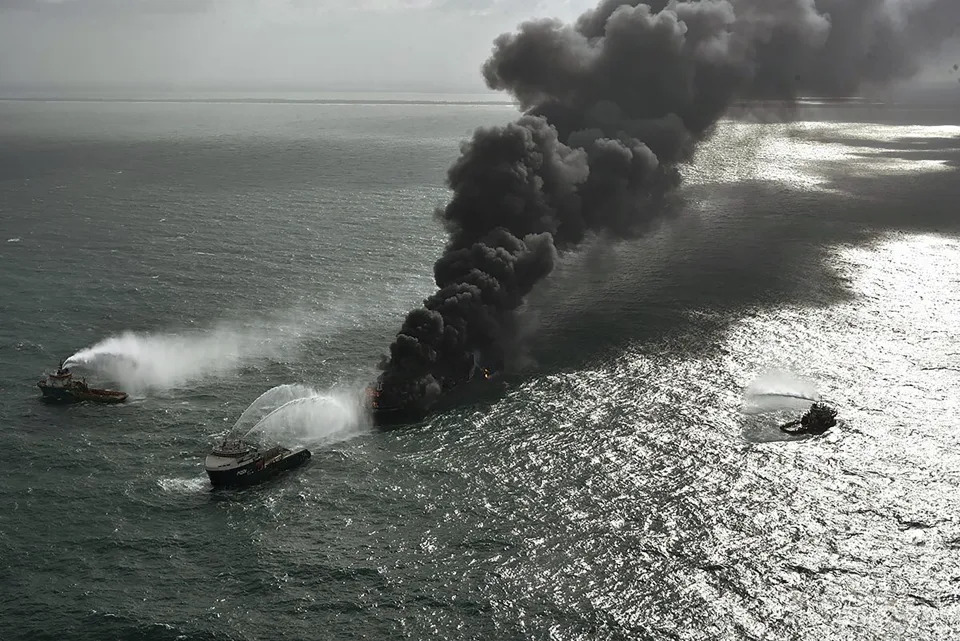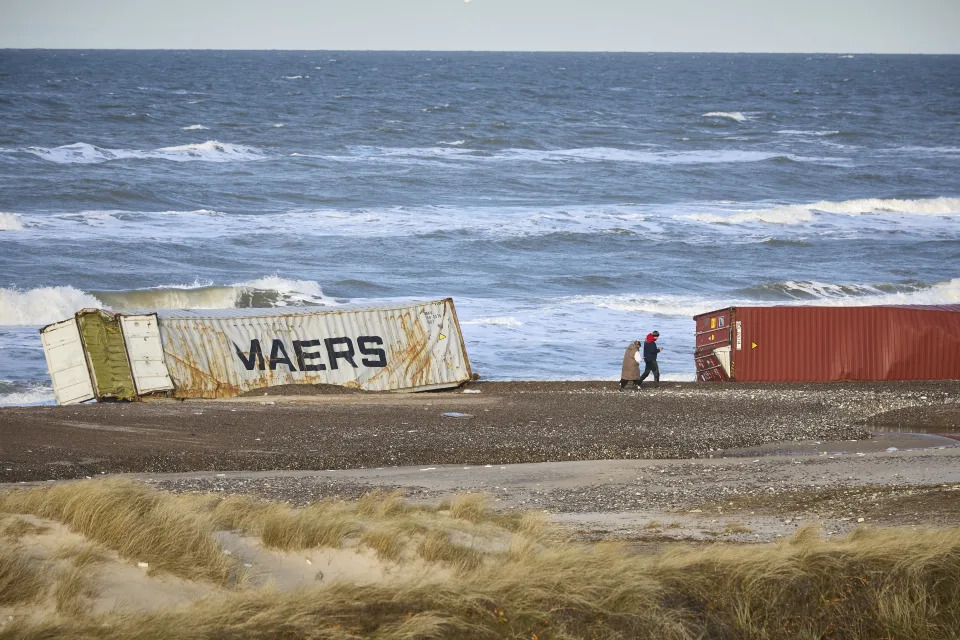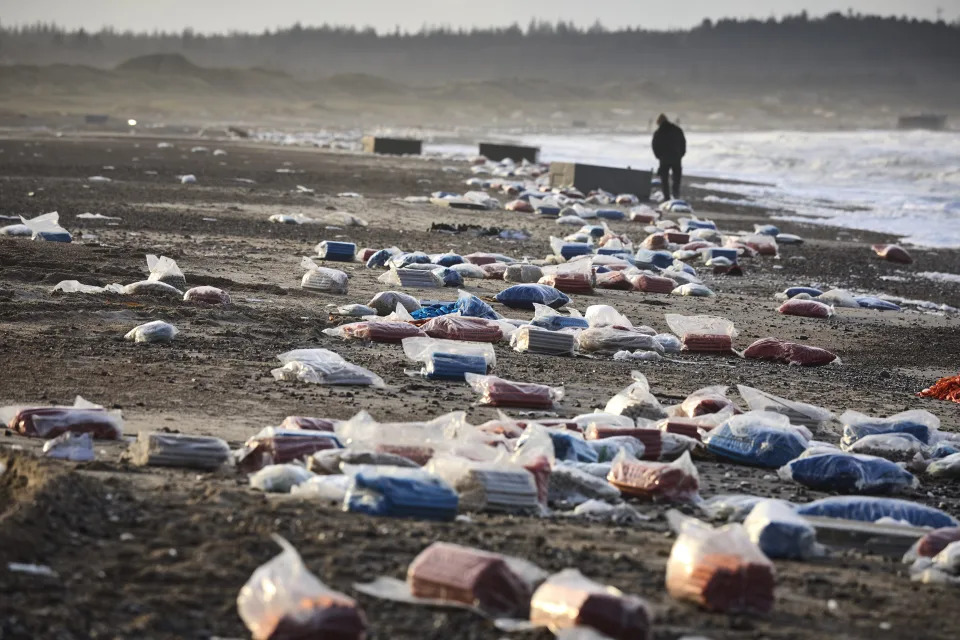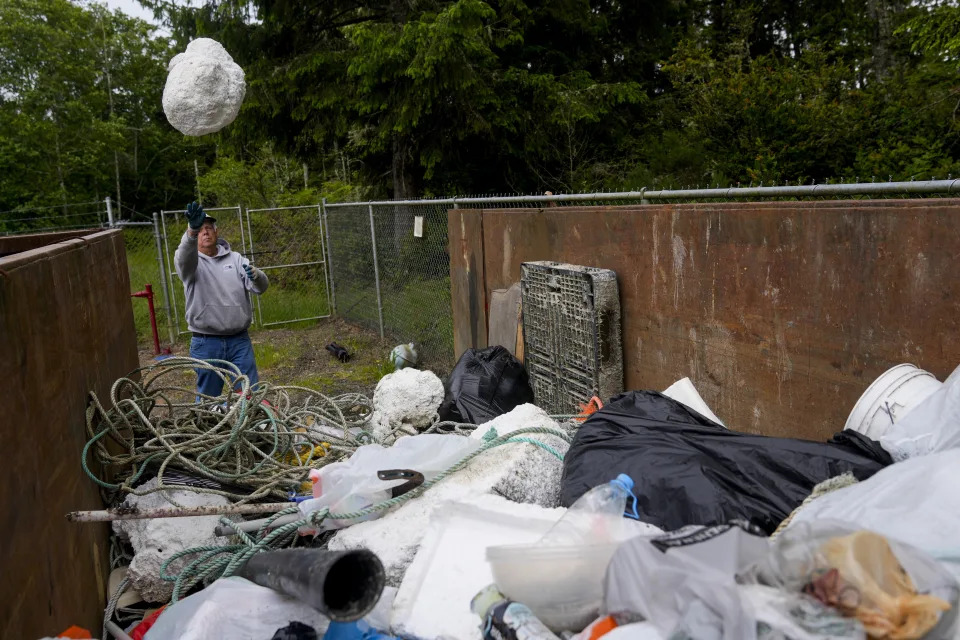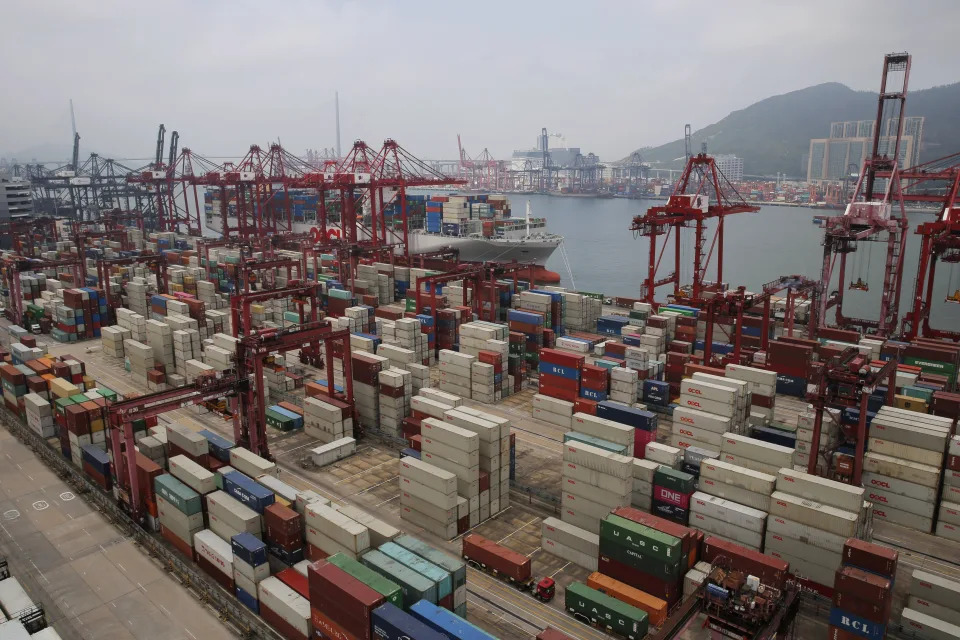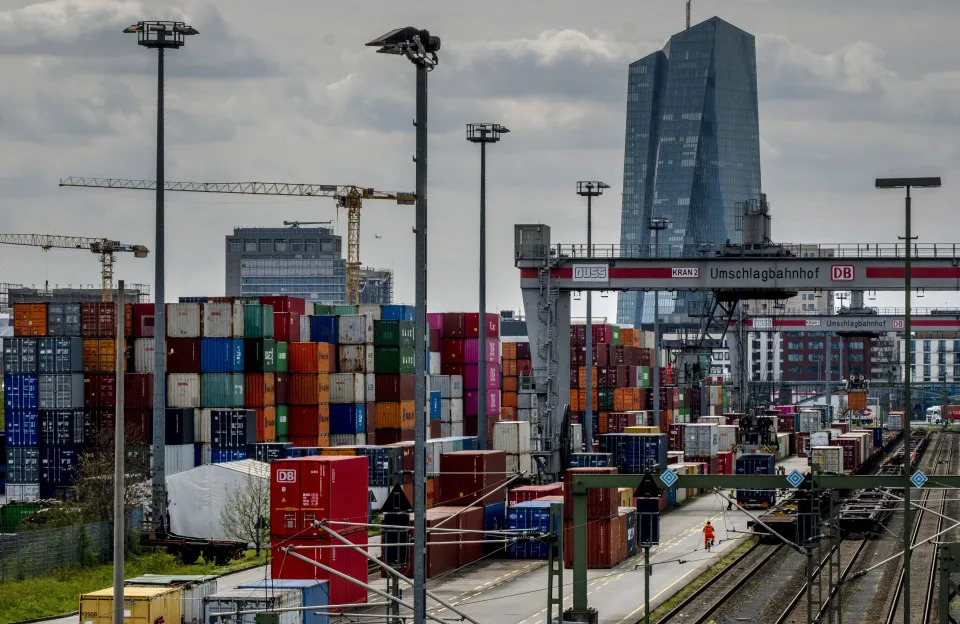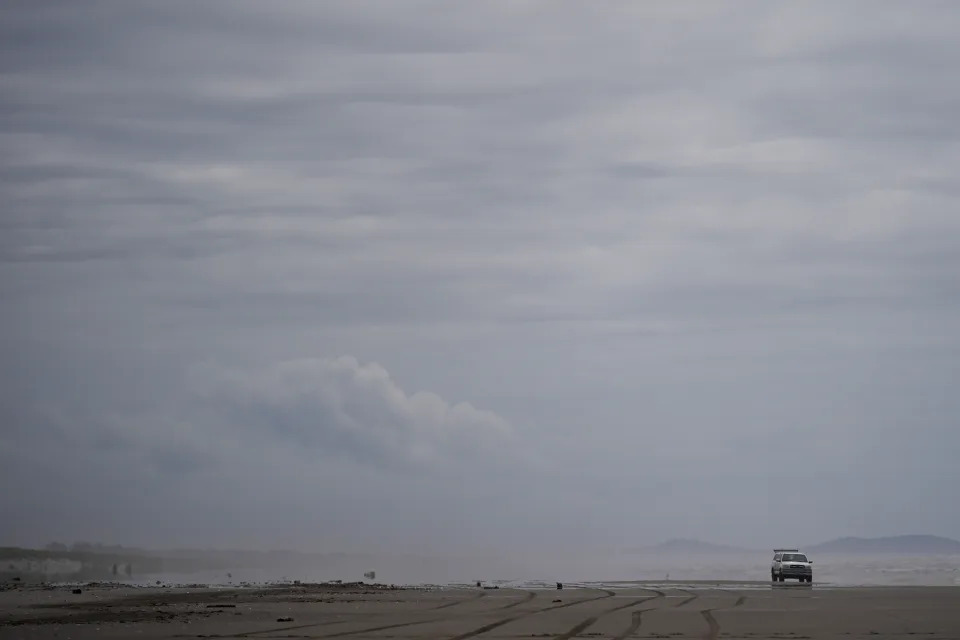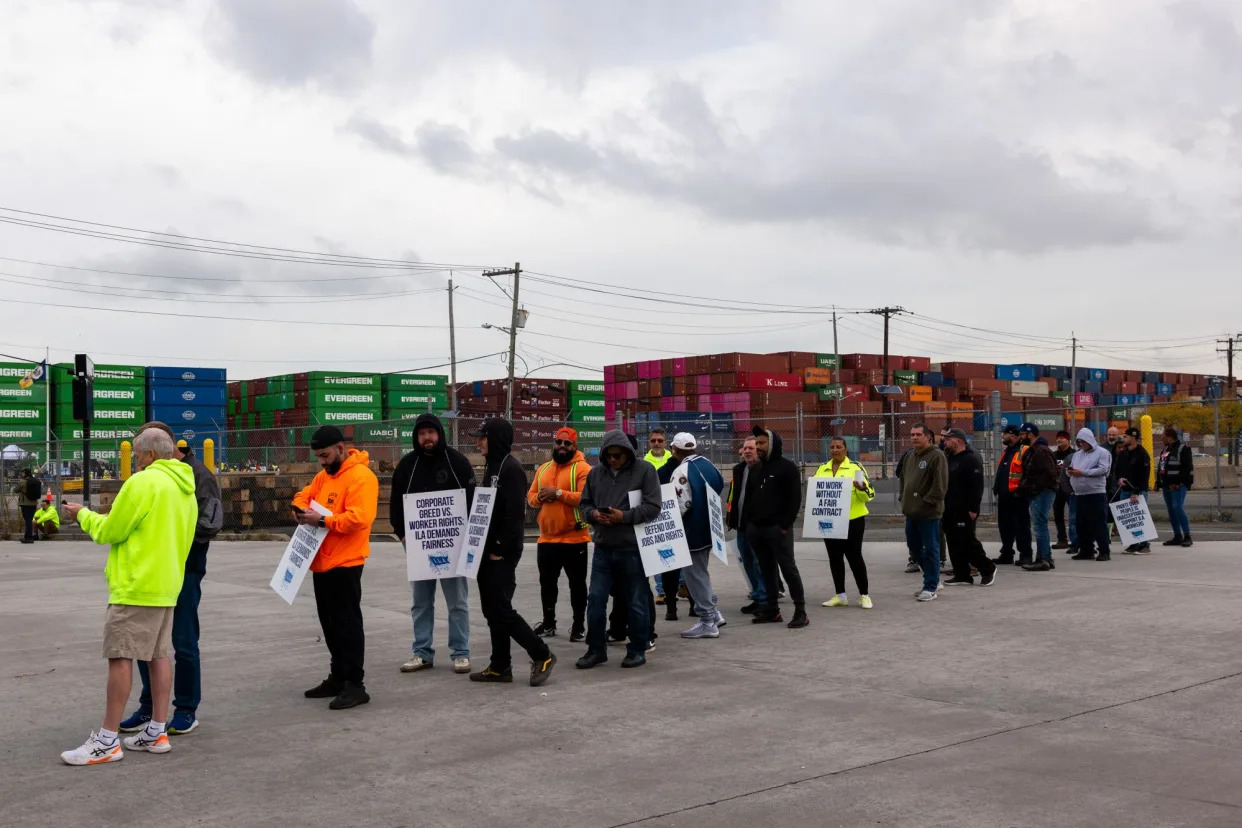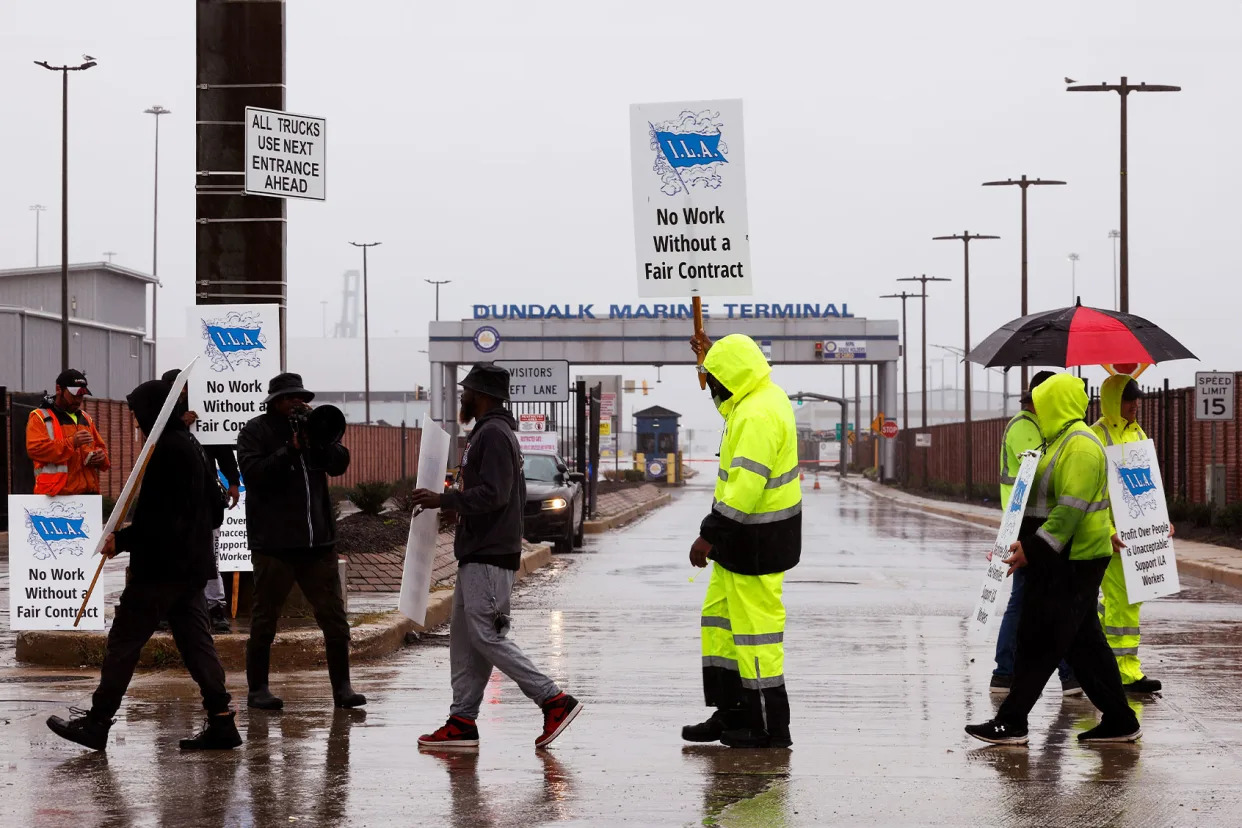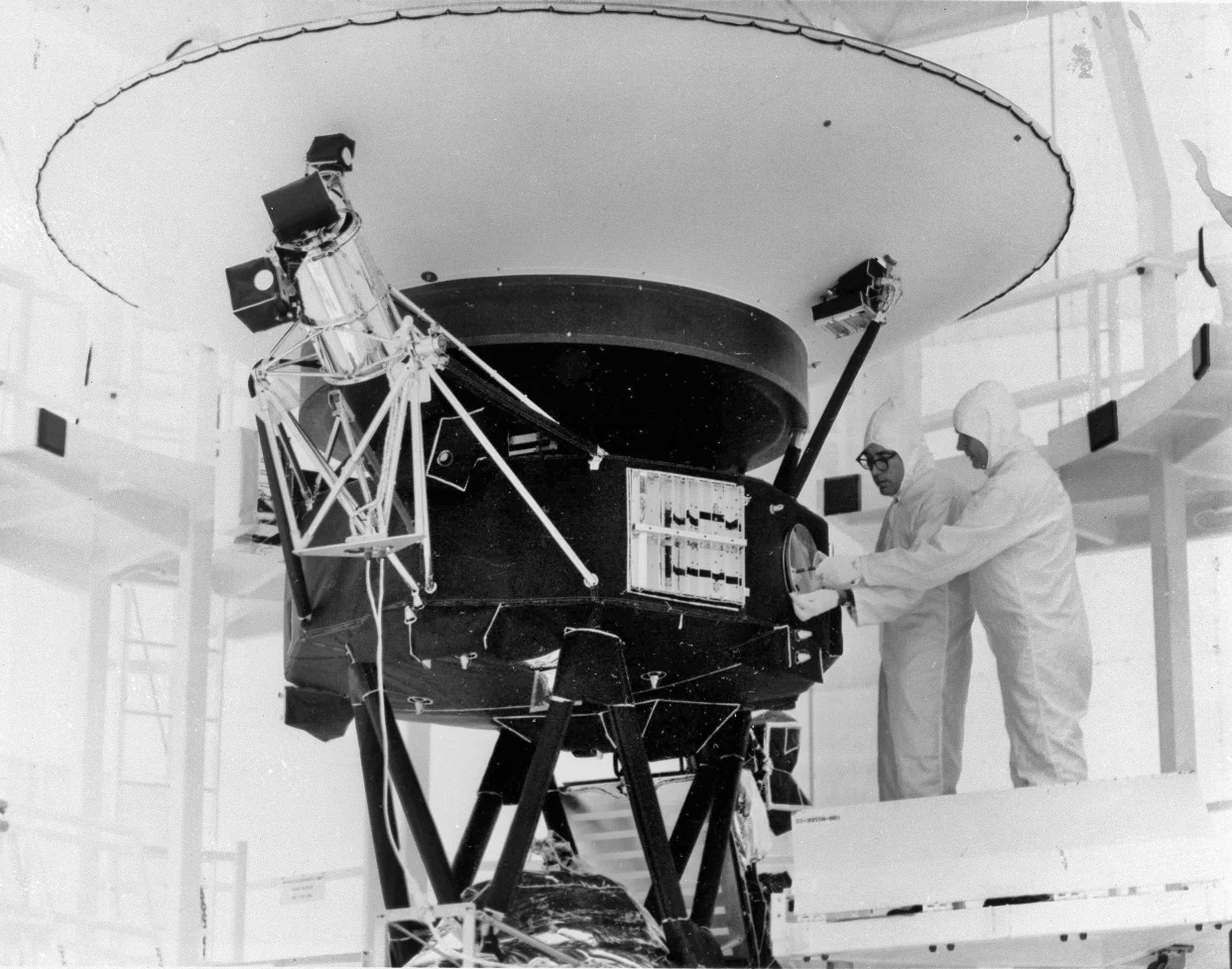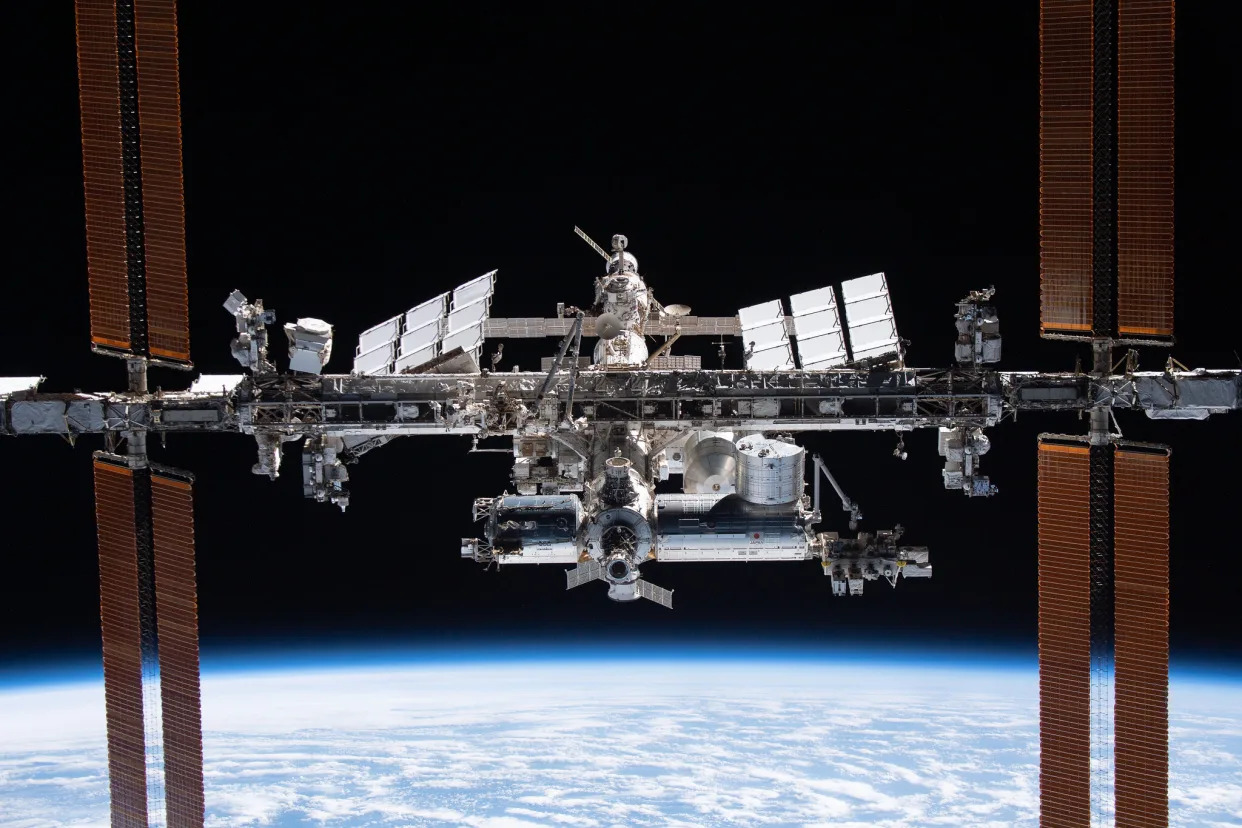Influential prophesizing pastors believe reelecting Trump is a win in the war of angels and demons
Thu, October 3, 2024




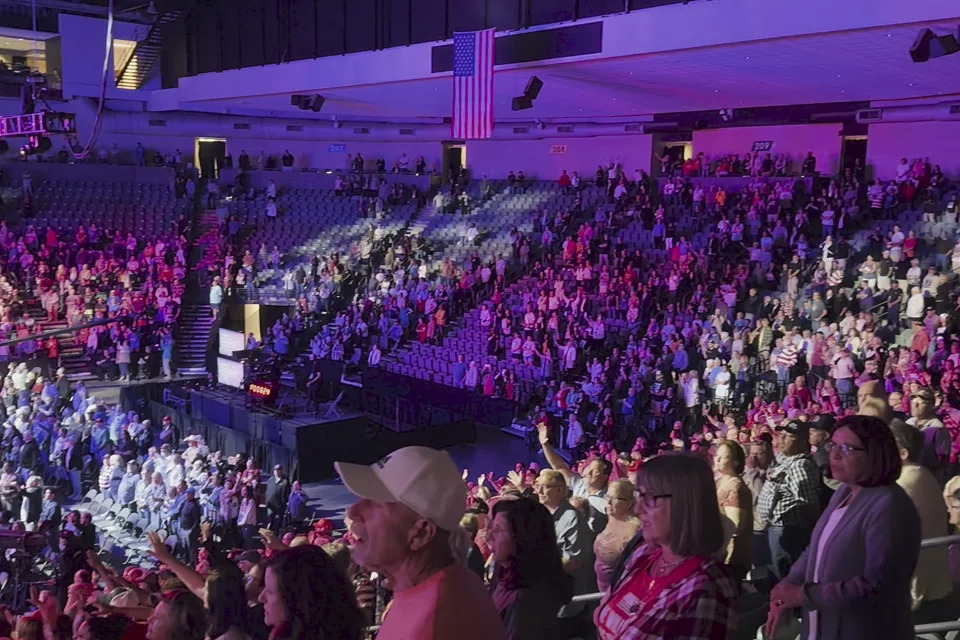
Election 2024-Spiritual Warfare
Pastor Hank Kunneman of Lord of Hosts Church in Omaha, Nebraska, is projected on a large screen as he speaks at the Opening the Heavens conference on Friday, Sept. 13, 2024, at the Mid-America Center in Council Bluffs, Iowa.
COUNCIL BLUFFS, Iowa (AP) — Thousands sang, cheered and prayed as multiple preachers declared Donald Trump to be God’s favored candidate to defeat what one called the “forces of darkness.”
Headliners denounced Democrat Kamala Harris — Trump's campaign rival — as influenced by demons and the spirit of the wicked biblical queen Jezebel.
Attendees stood and recited in unison a “Watchman Decree,” invoking a government that honors God and has “righteous” laws and “biblical” judicial rulings. They pledged to “take back and permanently control” positions of leadership in sectors such as government, business and culture.
“We break every curse against Donald Trump — we break every satanic incantation against his presidency,” declared the host preacher, Hank Kunneman, at the annual Opening the Heavens conference, held in mid-September at the Mid-America Center arena in Council Bluffs.
The conference is one of several of its type around the country this election year, featuring exuberant worship and speeches by influential preachers. It represents a highly politicized wing of charismatic Christianity, a larger movement that emphasizes spiritual gifts such as healings, prophecy and speaking in tongues.
As a sign of this movement's influence, Republican vice presidential nominee JD Vance appeared recently at a similar conference, called the Courage Tour, in Pennsylvania.
Goals for the conference included getting out the vote for Trump and his allies, and mobilizing believers to pray and take part in what’s proclaimed to be a literal spiritual war surrounding the election.
“Get your butt out there and vote. Get your voice and raise it!" declared Kunneman, who pastors Lord of Hosts Church in nearby Omaha, Nebraska, with his wife, Brenda. "Let every devil fall. ... We push back any attempt to steal the executive office."
The conference emerges from a movement that emphasizes authoritative direction from leaders considered to be modern-day apostles and prophets. It also incorporated Christian nationalism, a fusion of American and Christian identity.
Critics view the movement with alarm, seeing it as anti-democratic and supporting a candidate with authoritarian ambitions and incendiary rhetoric. Many of its leaders rallied behind Trump’s claims that the 2020 election was stolen despite overwhelming evidence to the contrary.
“The attitude coming into 2024 is, ‘The demons are probably going to try to steal this election again, and so we need to do spiritual warfare in advance to prevent that,’” said Matthew Taylor, author of the new book on the movement, “The Violent Take It By Force: The Christian Movement That Is Threatening Our Democracy.”
“It’s very hard to have a pluralistic democracy," Taylor said, when many distrust the electoral system.
Several leaders in this movement were present at rallies in Washington protesting Biden’s presidential victory before and on Jan. 6, 2021, said Taylor.
Leaders weren’t among the Capitol rioters, but some issued decrees and prayers that the certification of Biden's win be blocked and Trump returned for a second term.
Such ideology “is one of those golden threads” in the social media feeds of many participants of the Jan. 6 rallies, said Taylor, Protestant scholar at the Baltimore-based Institute for Islamic, Christian, and Jewish Studies.
Headliners at the Council Bluffs conference repeatedly spoke of being in a true spiritual war, merging decrees of political victory and Christian revival.
The “favor of the Lord” is on Trump, said one preacher, Dutch Sheets. “America is going to be saved, and I believe this election is a part of it."
His brother and fellow preacher, Tim Sheets, recounted seeing a vision of a warrior angel firing an arrow that landed in front of the White House, claiming the territory for God.
“We must move into battle for the Lord,” he said. “The drums of spiritual war are beating.”
Preachers repeatedly denounced abortion — one described it as an outpouring of blood craved by demons — and the “mutilation” of children, as they depicted gender-affirming treatment for transgender youths.
The arena appeared a little more than half full, with thousands of attendees from multiple states. Many wore T-shirts with slogans like, “Defender of Territory” and “We the People Trust Jesus,” while several bundled up with American flag-themed fleece blankets amid chilly air conditioning.
Participants at the Council Bluffs conference, mostly but not exclusively white, aligned with the larger evangelical Christian support of Trump.
About 8 in 10 white evangelicals supported Trump in 2020, according to AP VoteCast. Pew Research Center’s validated voter survey found similar support levels in 2016.
This year, about 7 in 10 white evangelical Protestants view the Republican nominee favorably, an AP-NORC Center for Public Affairs Research survey found.
Behind that supermajority is a diverse evangelicalism. The charismatic exuberance and focus on the supernatural contrast in tone with the relatively restrained approach of groups such as Southern Baptists, though they have allied in their political conservatism and opposition to abortion and LGBTQ+ rights.
And the charismatic movement has its own diversity. This heavily politicized branch teaches that in the present day, God has re-established the ancient biblical roles of apostle — an authoritative leader — and prophet, someone issuing divine proclamations.
The movement isn’t a denomination. Churches and ministries largely operate independently, even as its leaders speak at each others’ conferences, endorse each others’ books and appear on each others’ broadcasts.
As one example of the overlap: The Opening the Heavens conference in Council Bluffs featured one segment called FlashPoint Live — an in-person version of a television show that mixes charismatic Christianity and conservative politics. It’s one of several such FlashPoint Live conferences this year, hosted by pastor Gene Bailey — whose recent interview with Trump demonstrated the close ties between the movement and the former president.
The ReAwaken America tour, started by Trump’s former national security advisor Michael Flynn, has similarly blended the political with revival-like rallies and featured members of Trump's family.
While a range of evangelicals served as Trump’s faith-based advisors during his administration, charismatic leaders were especially prominent.
The apostles-and-prophets movement overlaps with two related, popular ideas: dominionism, which says Christians are to be in charge of society, and the “Seven Mountain Mandate,” which specifies seven areas where Christians are to lead — politics, religion, media, business, family, education and the arts and entertainment.
Bailey led in the reciting of the Watchman Decree at Council Bluffs, which included a pledge to “permanently control positions of influence and leadership in each of the seven mountains.”
Bailey and Kunneman declined interview requests through a media representative.
Taylor said that according to this strand of charismatic theology, Holy Spirit-filled Christians have the power not just to ask God for results but to speak them into being.
“It’s not just spouting off or praying prayers,” he said. “They believe that they are changing reality with these Watchman Decrees.”
He added: "It looks wild when you encounter it, but it is very popular, and it’s very dangerous."
Separate from the Council Bluffs conference organizers, but with an overlapping cast of speakers, is the Courage Tour. It’s led by Lance Wallnau, who popularized the Seven Mountain concept and was an early booster of Trump’s 2016 candidacy.
The tour has been held in crucial battleground states, mixing worship, prayers for miraculous healings and overt politics — including a call for Christians to become election workers or poll watchers to “fight the fraud” in swing states.
Taylor said this appears to lay groundwork for a campaign to delegitimize the 2024 election results if Harris wins.
While movement leaders speak of spiritual warfare — that is, angel vs. demon rather than human vs. human — Taylor said such rhetoric can stoke some people into taking matters into their own hands.
He said it’s no surprise that some rioters at the Capitol in 2021 were loudly praying and displaying Christian symbols.
“I really do worry that we could see a lot more political violence,” he said.
___
Associated Press religion coverage receives support through the AP’s collaboration with The Conversation US, with funding from Lilly Endowment Inc. The AP is solely responsible for this content.

